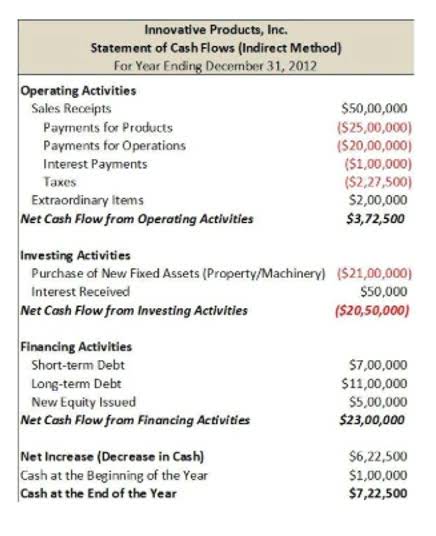Learn the concept of performance budgeting and its importance in finance. Discover how performance budgeting can optimize your financial management and decision-making. Performance-based budgeting is the practice of developing budgets based on the relationship between program funding levels and expected results from that program. The performance-based budgeting process is a tool that program administrators use to manage budget outlays more cost-efficiently and effectively. Performance information refers to outputs and outcome targets, costs for delivering these targets, and assessments of effectiveness and efficiency of expenditures in attaining objectives.

Resource allocation and decision-making based on performance metrics
However, if it’s an ad-supported news platform, then it must load third-party ad serving and user tracking scripts that can affect its performance. Two of the most common events used to measure page load speed are DOMContentLoaded and load events. However, they don’t give you a full picture of what the user experiences as the server can deliver a minimal page to the user and defer actual content load and display until many seconds later.
- In essence, performance-based budgeting allows the top management to demand the results of the laid down strategies or plans within a specific period.
- We will also examine examples of organizations successfully using performance budgeting and address some criticisms surrounding the approach.
- Performance budgeting can immediately show which departments are performing as they should and which ones are under-performing.
- Performance budgeting would discourage this process because there is no evidence or metric that can be measured to determine financial success.
- As a result, ZBB has had only modest application in schools, although the review of program activities makes ZBB particularly useful when overall spending must be reduced.
- The budget identifies and scores relative performance based on goal attainment for specified outcomes.
Zero-Based Budgeting: How it Affects Public Procurement and What You Can Do to Stay Ahead of the Curve
- One of the most important aspects of budgeting is to monitor and evaluate how well your budget is performing.
- Performance information refers to outputs and outcome targets, costs for delivering these targets, and assessments of effectiveness and efficiency of expenditures in attaining objectives.
- The budget is prepared by dividing all of a government’s operations into decision units at relatively low levels of the organization.
- In this article, you’ll learn how to measure website performance with the right metrics and set up a performance budget to achieve your business goals efficiently.
Many organizations experience numerous problems as a result of obscure objectives. Performance-based budgeting necessitates setting up of specific objectives and fundamental goals for the subsequent year. For instance, the goal of many businesses is to generate extra revenues. The generation of extra revenue is not specific and therefore defined goals such as business positioning, which can enhance revenue generation, is an example of a clear objective.
Tracking Progress and Adapting Strategies
Many government organizations have implemented performance-based budgeting to enhance service delivery. We know of a budget and we know of a performance report, but what is a budget performance report? The type of budget that has been carefully thought out from scratch, and the actual budget performance that often than not does not always be the same petty cash with the planned budget.
International Practices in Government Performance-Based Budgeting
By implementing data-driven insights and making budget modifications if needed, they can better optimize the allocation of financial resources. One of the most important aspects of budget performance analysis is to identify and explain the deviations from the planned budget. Budget variance is the difference between the actual amount spent or earned and the budgeted amount for a given period. Analyzing budget variance can help managers and stakeholders understand the causes and effects of overspending or underspending, and take corrective actions if needed. In performance budget this section, we will discuss how to analyze budget variance from different perspectives, such as revenue, cost, profit, and cash flow.
Performance Budgeting – Features, Process, Advantages, Limitations
By acknowledging the link between strategic planning and allocation of resources, https://www.bookstime.com/articles/period-costs this form of budgeting is geared towards long-term goals. In a strict performance budgeting environment, budgeted expenditures are based on a standard cost of inputs multiplied by the number of units of an activity to be provided in a time period. An organization’s total budget is the sum of all the standard unit costs multiplied by the number of units expected to be provided. Although this strict approach may be useful for certain types of operations, many organizations require a more flexible approach. For example, expenditures may be based simply on the activities or levels of service to be provided and a comparison of budgeted and historical expenditure levels.
Forecasting and budget adjustments involve multiple stakeholders and actors who have different roles and responsibilities in the budget process. Effective coordination and communication are needed to ensure that the forecasts and budget adjustments are consistent, coherent, and agreed upon by all parties. Tracking your expenses means recording and documenting every cost you incur, such as salaries, rent, utilities, travel, supplies, etc. Categorizing your expenses means assigning them to different accounts or groups, such as fixed or variable, direct or indirect, operational or capital, etc. This helps you analyze your spending patterns, identify your cost drivers, and allocate your costs to different projects or departments. Evaluate each department to determine performance objectives for your budgeting period and clearly communicate the strategy to your team or departments.






